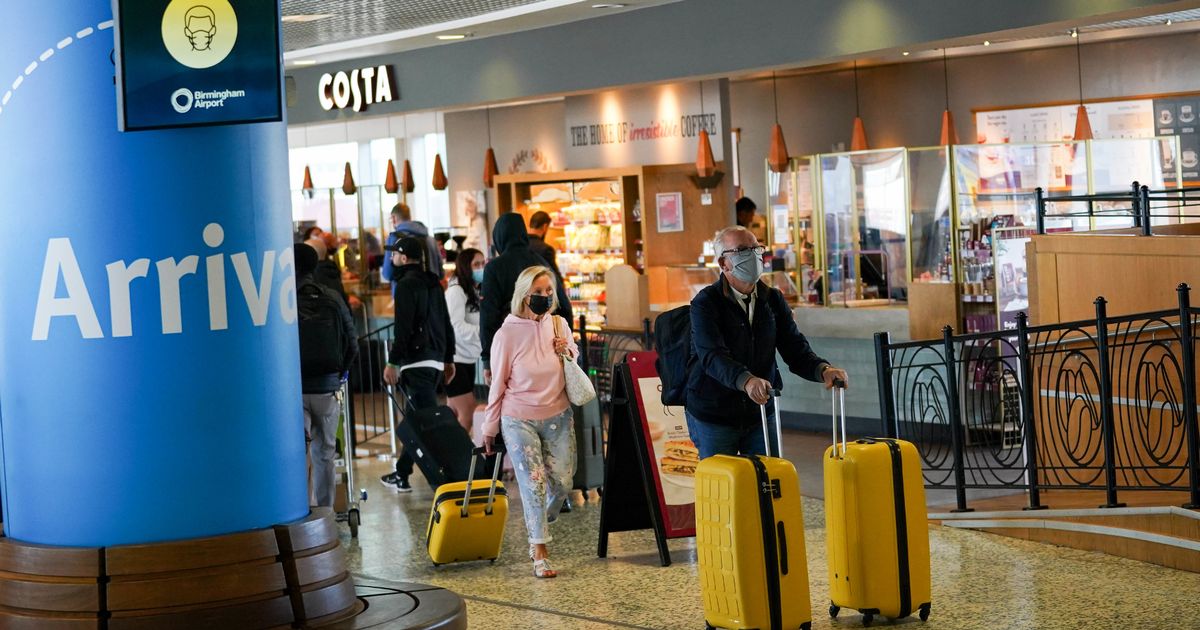The Santa Monica Parish Church of Alburquerque, Bohol
Should you’re planning a visit to Bohol, Philippines, you won’t need to miss the Alburquerque Church. In-built 1869, this historic church can be referred to as the Santa Monica Parish Church and is product of coral stones. It’s positioned within the town center and is taken into account considered one of the oldest and most beautiful churches in Bohol.
As a Roman Catholic church, the Alburquerque Church falls under the jurisdiction of the Diocese of Tagbilaran and holds great importance to the area people. The current coral stone church was began by Fr. Manuel Muro in 1885, continued in 1896 and finished from the Twenties to Nineteen Thirties. It’s considered one of the primary stone churches within the Philippines, initially constructed with light materials in 1842 and was enlarged and improved six years later.
With its wealthy history and stunning design, it’s easy to see why it’s considered some of the necessary landmarks in Bohol.

Historical Background
The Santa Monica Parish Church of Alburquerque is taken into account considered one of the oldest stone churches within the country, with its construction dating back to the nineteenth century.

The initial construction of the church was done using light materials in 1842. Nonetheless, it was later enlarged and improved by Fr. Manuel Muro in 1885. The current coral stone church was accomplished from the Twenties to the Nineteen Thirties.
The church has a wealthy history, having witnessed various significant events throughout the years. During World War II, it served as a refuge for the townspeople, protecting them from the Japanese forces. It also survived the devastating earthquake that hit Bohol in 2013, which destroyed many other Spanish-era churches within the region.
The Alburquerque Church is taken into account a heritage site by the National Historical Commission of the Philippines (NHCP) and is a well-liked tourist destination in Bohol. Its second patron is St. Augustine, and it’s under the jurisdiction of the Roman Catholic Diocese of Tagbilaran.
Architectural Design
The Santa Monica Parish Church of Alburquerque is a phenomenal example of Spanish colonial architecture within the Philippines. The church’s exterior exhibits a mix of architectural styles, combining elements of Baroque, Neoclassical, and Earthquake Baroque design. The inside of the church is equally stunning, featuring intricate details and delightful artwork.
Exterior
The Alburquerque Church’s exterior is a testament to the skill and creativity of the architects and builders who constructed it. The church’s façade combines Baroque and Neoclassical styles, with a big central portal flanked by two smaller portals on either side. The façade is adorned with intricate carvings and sculptures, including images of saints and angels.

The church’s bell tower is a separate structure to the suitable of the primary entrance. The tower is a straightforward, rectangular structure with a small dome at the highest. The bell tower has intricate carvings and sculptures, including images of saints and angels.
Interior
The inside of the Alburquerque Church is equally impressive, with beautiful artwork and complex details throughout. The church’s nave is lined with columns and arches, and the ceiling is adorned with paintings of saints and angels. The altar is the inside’s centerpiece, featuring a big crucifix and delightful sculptures of saints.

The church’s side chapels contain beautiful artwork and sculptures value admiring. One of the impressive features of the inside is the intricate picket pulpit, which is decorated with carvings and sculptures of saints and angels.

The Alburquerque Church is a shocking example of Spanish colonial architecture within the Philippines. Whether you might be an architecture enthusiast or just appreciate beautiful buildings, the Alburquerque Church is unquestionably value a visit.
Art and Iconography
The Alburquerque Church is a big religious and historical landmark in Bohol, Philippines. The church’s art and iconography are a testament to the wealthy cultural and spiritual heritage of the Philippines.
The church’s interior is adorned with intricate carvings, paintings, and sculptures that showcase the talents of local artisans. The ceiling of the nave encompasses a stunning mural of the Last Judgment, while the altar is decorated with a phenomenal retablo that depicts the lifetime of St. Monica.

The church’s sacristy houses a group of spiritual artifacts, including vestments, chalices, and other items utilized in the celebration of the Mass. The sacristy also accommodates various paintings by Ray Francia, some of the prolific artists in Bohol and Cebu through the Twenties and Nineteen Thirties.
The church’s iconography is a mix of European and Filipino styles. The photographs of the saints and other religious figures are depicted in a method that’s uniquely Filipino, with vivid colours and daring lines. The church’s retablo is a phenomenal example of this style, with intricate carvings and vivid colours that bring the story of St. Monica to life.
Cultural Significance
The Alburquerque Church is a big cultural landmark in Bohol, Philippines. It serves as a testament to the wealthy heritage and spiritual devotion of the Boholano people. The church is a well-liked tourist destination and a must-visit for anyone curious about history and architecture.
The church is an Necessary Cultural Property, recognized by the National Museum of the Philippines for its historical, cultural, and artistic significance. It’s considered one of the primary stone churches within the Philippines, initially constructed with light materials in 1842 and was enlarged and improved six years later. The church’s grand façade showcases intricate carvings and reliefs, while the inside is a masterpiece of Philippine Baroque design.
The church’s patron saint is St. Monica, known for her devotion to prayer and her role as a mother. The church celebrates its feast day every twenty seventh of August, a big event for the area people. The church also serves as a venue for other religious events, corresponding to weddings, baptisms, and other ceremonies.
The Alburquerque Church just isn’t only a spot of worship but in addition a historical and architectural treasure that visitors can appreciate. Its cultural significance is recognized not only within the Philippines but in addition around the globe. The church has been featured in various travel guides, documentaries, and other media, highlighting its importance as a cultural landmark.
Restoration and Preservation
The Alburquerque Church has undergone several restoration and preservation efforts over time to take care of its structural integrity and historical value.
One of the recent restoration efforts was in 2013 after the Bohol earthquake, which caused minimal damage to the church. Restoration work was already being done on the church three years before the earthquake, which helped to reduce the damage. The restoration work was carried out by the National Historical Commission of the Philippines (NHCP) and the Diocese of Tagbilaran.
Nonetheless, in 2016, restoration work was temporarily stopped as a result of non-compliance with the necessities of the National Constructing Code of the Philippines (NBCP). The Office of the Municipal Constructing Official of Alburquerque issued an order to stop all restoration activities until the necessities were met.
Despite the temporary setback, the restoration work resumed after complying with the NBCP requirements. The restoration work included the repair and reinforcement of the church’s partitions, roof, and foundation. The NHCP also carried out preservation efforts, corresponding to the installation of protective covers on the church’s partitions to stop further damage from the weather.
Along with restoration and preservation efforts, the Alburquerque Church also holds cultural and spiritual events all year long. These events include the annual fiesta celebration, which is held in honor of the town’s patron saint, St. Monica. The church also hosts weddings, baptisms, and other religious ceremonies.
Events and Festivals
Should you’re planning to go to Alburquerque Church, you may want to envision out the upcoming events and festivals in the realm. The church is a well-liked venue for various religious celebrations and cultural events all year long.
One of the significant events in Alburquerque is the town fiesta, which is held every May 10 to 12 in honor of their patron saint, Santa Monica. The fiesta is a grand celebration that encompasses a colourful parade, street dancing, live music, and a big selection of local delicacies. The highlight of the fiesta is the fluvial procession, where the image of Santa Monica is carried on a beautifully decorated barge and paraded along the Loay River.
Other than the fiesta, the Alburquerque Church also hosts other religious events corresponding to novena masses, holy week processions, and Christmas caroling. These events are a wonderful opportunity to witness the deep religious devotion and cultural heritage of the Alburanons.
Should you’re curious about learning more in regards to the history and culture of Alburquerque, it is advisable to attend the town’s heritage festival, which is held every August. The festival showcases the town’s wealthy cultural traditions through exhibits, performances, and workshops. It’s also possible to sample a few of the local delicacies and buy souvenirs from the varied vendors.
Visitor Information
Should you’re planning to go to the Alburquerque Church, here’s some useful information to show you how to prepare on your trip.
Location
The Alburquerque Church is positioned in Alburquerque, Bohol, Philippines. It’s situated within the town center and is definitely accessible by public transportation.
Hours
The church is open to visitors from 8:00 AM to five:00 PM every day. Nonetheless, please note that mass is held on certain days and times, which can affect your visit. It’s best to envision the church’s schedule beforehand to avoid any inconvenience.
Dress Code
Because the Alburquerque Church is a spiritual site, visitors must dress modestly and respectfully. Shorts, sleeveless tops, and revealing clothing aren’t allowed. It’s endorsed to wear comfortable shoes because the church grounds could be uneven.
Other Information
- Photography is allowed contained in the church, but please be respectful and don’t use flash photography during mass or other religious ceremonies.
- There’s a small museum positioned contained in the church, which showcases various religious artifacts and historical items. Visitors are welcome to explore the museum for a small fee.
- The church is under the jurisdiction of the Roman Catholic Diocese of Tagbilaran, and visitors are expected to follow the foundations and regulations set by the church authorities.
Interesting Facts about Alburquerque Church
Listed below are some interesting facts about this historic landmark:
- The Alburquerque Church, also referred to as the Santa Monica Parish Church, is considered one of the oldest stone churches within the Philippines. It was initially constructed with light materials in 1842 and was enlarged and improved six years later. The current coral stone church began construction by Fr. Manuel Muro in 1885, continued in 1896 and finished from the Twenties to Nineteen Thirties.
- The church is known as after St. Monica, the mother of St. Augustine, and is under the jurisdiction of the Roman Catholic Diocese of Tagbilaran.
- The church was declared an Necessary Cultural Property by the National Museum of the Philippines in 2013 and was also declared a National Historic Landmark by the National Historical Institute in 2014.
- The church’s bell tower is separate from the primary constructing and across the road. It was in-built 1909 and encompasses a clock that also works today.
- The church’s interior is adorned with beautiful paintings, murals, and sculptures. The ceiling is painted with scenes from the Bible, while the partitions feature intricate carvings and reliefs.
- The church’s altar is product of marble and encompasses a statue of St. Monica. The altar also houses a relic of St. Augustine’s mother.
- The church’s museum showcases the wealthy history and culture of Alburquerque. It features artifacts, photographs, and other items related to the church and the town’s history.
Alburquerque Church Mass Schedule
| Sun | Mon | Tue | Wed | Thu | Fri | Sat |
|---|---|---|---|---|---|---|
|
6:30 AM – 7:30 AM |
6:00 AM – 7:00 AM |
6:00 AM – 7:00 AM |
5:00 PM – 6:00 PM |
6:00 AM – 7:00 AM |
6:00 AM – 7:00 AM |
6:00 AM – 07:00 AM |
|
8:30 AM – 9:30 AM |
4:30 PM – 05:30 PM |
|||||
|
4:30 PM – 5:30 PM English |

Steadily Asked Questions
What’s the history of Santa Monica Parish Church?
The Santa Monica Parish Church of Alburquerque, also referred to as the Alburquerque Church, is a Roman Catholic church positioned within the municipality of Alburquerque in Bohol, Philippines. The church was initially constructed with light materials in 1842 and was enlarged and improved six years later.
The current coral stone church began by Fr. Manuel Muro in 1885, continued in 1896, and finished from Twenties to Nineteen Thirties. The church is devoted to Saint Monica, the mother of Saint Augustine, and is considered one of the primary stone churches within the Philippines.
What’s the importance of Baroque churches within the Philippines?
Baroque churches within the Philippines were built through the Spanish colonial era and are known for his or her ornate decorations and grand architecture. They’re significant because they represent the fusion of Spanish and native cultures, they usually showcase the country’s wealthy history and spiritual heritage.
The Baroque churches were built by Spanish friars to evangelize the native population, they usually served as centers of spiritual and social life within the communities where they were positioned. Lots of these churches have been recognized as World Heritage Sites by UNESCO.
What’s the importance of Tagbuane Alburquerque in Bohol’s church history?
Tagbuane Alburquerque is a big figure in Bohol’s church history because he was considered one of the primary native Boholanos to be ordained as a priest. He was born in Alburquerque in 1844 and was ordained in 1871.
Tagbuane served in various parishes in Bohol and was known for his dedication to the church and his commitment to the welfare of his parishioners. He’s remembered as a pioneer within the Catholic Church in Bohol and as an emblem of the resilience and faith of the Boholano people.
What’s the oldest Catholic church in Bohol and its history?
The oldest Catholic church in Bohol is the Baclayon Church, which was in-built 1595 by the Jesuits. The church is positioned within the town of Baclayon, which is about 6 kilometers from Tagbilaran City.
The Baclayon Church is considered one of the oldest stone churches within the Philippines and is thought for its Baroque architecture and spiritual artifacts. It was declared a National Cultural Treasure by the National Museum of the Philippines in 1995 and is a well-liked tourist destination in Bohol.
Bohol Travel and Tour Packages
Want more updates about latest package tours and tourist attractions in Bohol which you could add to your itinerary?
Like, Follow, and Subscribe to OutofTownBlog.com on Facebook, Twitter, Instagram, and Pinterest, and Team out Of Town on YouTube for more Bohol Travel Spots.
Read:













